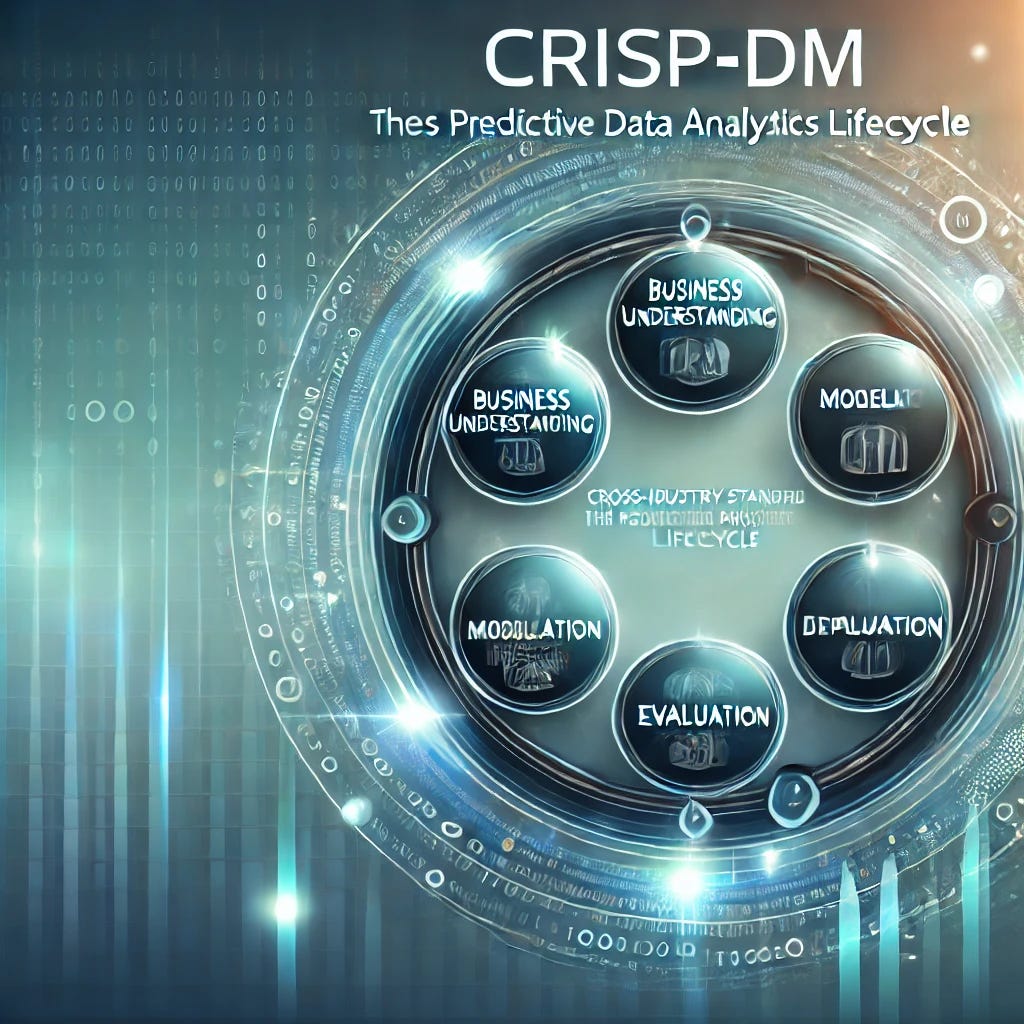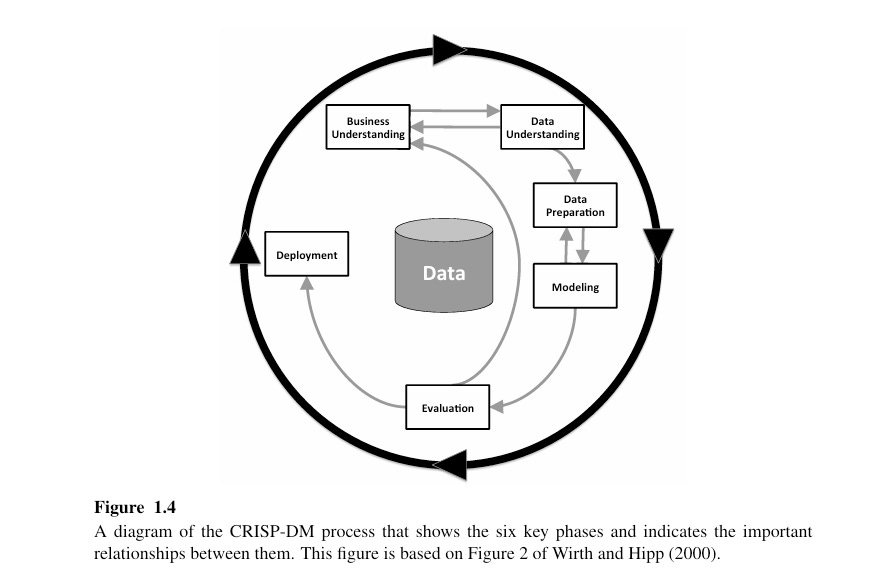Data Analytics#04
The predictive Data Analytics Project Lifecycle: CRISP-DM
Hello!!
I hope you enjoyed our previous newsletter on how No Free Lunch Theorem & Goldilocks Method help in future of predictive data analytics. Let’s continue to our previous discussion with new topic The predictive Data Analytics Project Lifecycle: CRISP-DM.
CRISP-DM:
One of the most commonly used processes for predictive data analytics features is the Cross Industry Standard Process for Data Mining (CRISP-DM). features of the CRISP-DM process that make it attractive to data analytics practitioners are that it is non-proprietary; it is application, industry, and tool neutral; and it explicitly views the data analytics process from both an application-focused and a technical perspective.
It refers to Data Mining (a field that overlaps significantly with predictive data analytics), it is equally applicable to predictive analytics projects
Six key phases of the predictive data analytics project lifecycle that are defined by the CRISP-DM:
•Business Understanding: Predictive data analytics projects never start out with the goal of building a prediction model. Instead, they focus on things like gaining new customers, selling more products, and adding efficiencies to a process. So, during the first phase in any analytics project, the primary goal of the data analyst is to fully understand the business (or organizational) problem that is being addressed and then to design a data analytics solution for it.
•Data Understanding: Once the manner in which predictive data analytics will be used to address a business problem has been decided, it is important that the data analyst fully understand the different data sources available within an organization and the different kinds of data that are contained in these sources.
• Data Preparation: Building predictive data analytics models requires specific kinds of data, organized in a specific kind of structure known as an analytics base table (ABT). This phase of CRISP-DM includes all the activities required to convert the disparate data sources that are available in an organization to a well-formed ABT from which machine learning models can be induced.
•Modeling: In the Modeling phase of the CRISP-DM process, the machine learning work occurs. Different machine learning algorithms are used to build a range of prediction models from which the best model will be selected for deployment.
• Evaluation: Before models can be deployed for use within an organization, it is important that they are fully evaluated and proved to be fit for the purpose. This phase of CRISP-DM covers all the evaluation tasks required to show that a prediction model will be able to make accurate predictions after being deployed and that it does not suffer from overfitting or underfitting.
• Deployment: Machine learning models are built to serve a purpose within an organization, and the last phase of CRISP-DM covers all the work that must be done to success fully integrate a machine learning model into the processes within an organization.
This summary provides an overview of tools and techniques for building predictive data analytics models using machine learning. The main choice is between using application-based tools or programming languages:
1.Application-Based Tools: These are user-friendly, point-and-click solutions that make it quick and easy to develop models. Examples include:
•IBM SPSS, SAS Enterprise Miner (enterprise solutions)
•Knime, RapidMiner, Weka (open-source and free)
They allow fast deployment but limit flexibility to the developers’ design.
2.Programming Languages: Commonly used options are R and Python, offering flexibility and early access to advanced techniques. They require more skill to learn and come with less built-in support.
Overall, predictive analytics involves inducing models from historical data using machine learning, where multiple choices (e.g., algorithms, features) introduce biases in the process.
Thank you for joining us! if you enjoyed this edition, consider giving it a like. We’d love to hear your thoughts-drop a comment below!





